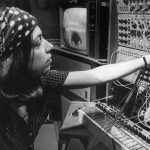Basic Elements Of Film Sound – 3 Basic Parts

Written by: Andrej Imamovic –
– We all see motion picture as an essentially visual experience, but we cannot forget the importance of film sound. A good sound track is often as complicated as the image on the screen. The entire sound track has 3 basic parts:
– human voice
– sound effects
– music
These three tracks must be mixed and balanced so as to produce the necessary emphases which in turn create desired effects. What we are talking about here is dialogue, synchronous and asynchronous sounds, and music.
THE HUMAN VOICE: dialogue
Dialogue authenticates the speaker as an individual or a real person rather than the imaginary creation of a story teller. As is the case with stage drama, dialogue serves to tell the story and expresses feelings and motivations of characters as well. Often with film characterization the audience perceives little or no difference between the character and the actor.
When voice texture fits the performer’s physiognomy and gestures, a whole and very realistic persona emerges. The viewer sees not an actor working at his craft, but another human being struggling with life. It is interesting to note that how dialogue is used and the very amount of dialogue used varies widely among films.
For example: In the film 2001: A Space Odyssey a little dialogue was evident, and most of what was used was banal. In this way the filmmaker was able to portray the “inadequacy of human responses when compared with the magnificent technology created by man and the visual beauties of the universe.”

Reservoair Dogs, on the other hand, presents practically non-stop dialogue and action delivered at break-neck speed. The audience is bounced from conversation to action; there is no time for audience reflection. The audience is caught up in a whirlwind of activity in simply managing to follow the plot.
SOUND EFFECTS: synchronous and asynchronous sounds
Synchronous sounds are those sounds which are synchronized or matched with what is viewed. For example: If the film portrays a character playing guitar, the sounds of the guitar are playing.
Synchronous sounds contribute to the realism of film and also help to create a particular atmosphere. For example: The “click” of an elevator being opened may simply serve to convince the audience that the image portrayed is real, and the audience-may only subconsciously note the expected sound. However, if the “click” of an opening door is part of an ominous action such as a getting away after burglary, the sound mixer may call attention to the “click” with an increase in volume; this helps to engage the audience in a moment of suspense.
Asynchronous sound effects are not matched with a visible source of the sound on screen. Such sounds are included so as to provide an appropriate emotional nuance, and they may also add to the realism of the film.
For example: A film maker might opt to include the background sound of an police siren while the foreground sound and image portrays an arguing couple. The asynchronous police siren my underscores serious problems in their surroundings and at the same time the noise of the siren adds to the realism of the film by acknowledging the film’s city setting.
MUSIC: background music

John Carpenter & Dan Wyman working on a film score
Background music is used to add emotion and rhythm to a film. Usually not meant to be noticeable, it often provides a tone or an emotional attitude toward the story and/or the characters epicted. In addition, background music often foreshadows a change in mood. For example, dissonant music may be used in film to indicate an approaching (but not yet visible) menace or disaster.
Background music may aid viewer understanding by linking scenes. For example, a particular musical theme associated with an individual character or situation may be repeated at various points in a film in order to remind the audience of salient motifs or ideas.
Film sound is comprised of conventions and innovations. We have come to expect an acceleration of music during car chases and creaky doors in horror films. Yet, it is important to note as well that sound is often brilliantly conceived. The effects of sound are often largely subtle and often are noted by only our subconscious minds.*
Check some soundtracks we like bellow
Escape from New York (1985) Soundtrack
Ennio Morricone – Spaghetti Western Music Collection
*Source used – America in Film and Fiction by Jane Knowles Marshall, © Yale- New Haven Teachers Institute


